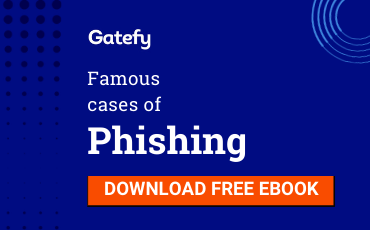7 most common types of email spam
- Updated at March 18, 2021
- By Gatefy
- Blog, Tips & Advices

Yes, there are different types of spam. There are so many types it gets even hard to create one single list. But we’ve built one. We’ve put together a list of the 7 most common types of email spam.
We define spam as an unsolicited message that may or may not have a malicious bias. When we say malicious, we’re talking about scams and frauds.
Another characteristic that determines spam is that they’re bulk messages, reaching millions of people every day.
To fight different types of email spam, here at Gatefy we offer a secure email gateway solution and an anti-fraud solution based on DMARC. These are anti-spam solutions, designed for companies and other organizations.
When we talk about spam attacks, what many people don’t realize is the real damage caused by them, especially in environments of companies and organizations. Over time, spam has ceased to be just an annoying ad to become a technical and economic threat.
What I’m trying to say is that spam campaigns are directly linked, for example, to time wasting, productivity loss, systems and communications overload, cases of malware infections and, above all, irritation and loss of patience.
Now you know how damaging this is to a business’s environment. In this post, we’ll cover the following types of spam:
Table of Contents

Check out 7 most common types of email spam
1. Ads
This is one of the most common types of spam. I bet you’ve already received several unsolicited emails offering products and services, such as weight loss pills and tennis offers. In many cases it may be a scam but the offer may also be real.
2. Chain Letters
“Something bad will happen to you”. Usually, chain letters tell exciting and thrilling stories and persuade you to pass the message along under penalty of having something very bad happen to you. Be careful or you’re going to have a run of bad luck. Buuuuuu!
3. Email Spoofing
Spoofing email spam is related to phishing scams. They happen when spammers or phishers try to fool you by impersonating someone you know or a company you have a relationship with. This is one of the most dangerous types of spam.
4. Hoaxes
In this type of spam, we include offers and miracle promises, such as, for example, “get rich in less than a month” or “gain the body of your dream by eating more and working out less”. In general, this tactic is used by spammers to hold your attention and direct you to a malicious website.
5. Money Scams
Here we’ve spam messages with easy money promises, such as the Nigerian prince scheme. In this case, you apparently only have to lend a small amount of money to receive a big reward in the future.
Money spam also involves asking for money for hungry children in Africa or for families who have suffered losses as a result of a natural disaster.
6. Malware Warnings
If you receive an email warning you about a malware infection on your devices, such as ransomware or virus, this is probably a malware warning spam. In some cases, the spammers say they have the solution to your problem and that you just need to provide some information or download an attachment. Watch out!
7. Porn Spam
We decided to add this type of spam to the list because it’s very common. Sending pornography through email is widely used by spammers because the pornography market is very lucrative, increasing people’s interest.
Of course, spammers know that and use it to create malicious emails using erotic images and videos.
How to identify spam and avoid spam
We’ve already talked about spam protection. If you have any questions on the subject or are looking for an anti-spam solution for your company, let us know. We can help.
Gatefy Email Security is a solution that protects your company against different types of email threats, such as spam, phishing, ransomware, viruses, BEC (Business Email Compromise), and social engineering.
Gatefy Anti-Fraud Protection is a DMARC-based solution that protects your company’s domain. It prevents criminals from using your name and brand in spam, phishing, and BEC scams, for example. In addition, the solution also improves the delivery capacity of your emails, as in cases of email marketing, for example.




